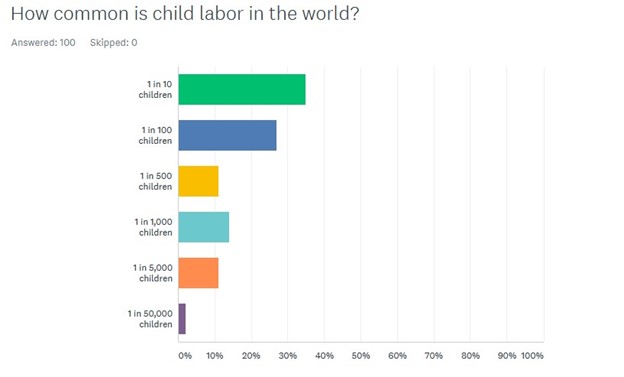The Child Labor Coalition announces the 2024 Congressional Champions of Child Labor Protections for taking bold action against child labor exploitation
October 31, 2024
Contact: Reid Maki (202) 207-2820, reidm@nclnet.org
WASHINGTON, DC – The Child Labor Coalition (CLC) is proud to announce the 25 recipients of the 2024 Congressional Champions of Child Labor Protections who have taken a stand against the troubling rise of child labor exploitation during the 118th Congress. During a period in which child workers were increasingly found working illegally in factory settings across the U.S., these legislators responded by strengthening child labor protections – either by introducing new legislation or cosponsoring child labor bills endorsed by the Child Labor Coalition.
“Over the last two years, child labor protections have faced unprecedented threats as over 30 states sought to weaken regulations on the hours children can work and the types of hazardous work children can perform,” says Reid Maki, Director of Child Labor Advocacy at the Child Labor Coalition.
“We are fortunate these stalwart lawmakers worked to strengthen child labor protections and enforcement,” says CLC chair Sally Greenberg, who is also the CEO of the National Consumers League. “These bills provide creative and much-needed solutions to our widespread child labor problem.”
Recent Department of Labor data show child labor violations have soared by 472% between 2015 and 2023, highlighting cases where minors are subjected to grueling hours, hazardous work environments, and, in some tragic cases, loss of limbs and fatalities. Against this backdrop, these 25 Congressional Champions have supported legislation aimed at protecting child laborers and ensuring compliance with federal child labor laws.
Congress responded robustly with at least eight pieces of legislation addressing child labor that the CLC has endorsed. “Much of this legislation would significantly increase civil monetary fines for child labor violations – not just by a little, but often by a factor of 10,” says CLC’s Maki. “We saw several innovative and comprehensive responses in bills like “Children Harmed in Life-Threatening or Dangerous (CHILD) Labor Act of 2023, by Senator Casey (D-PA) and Rep. Rosa DeLauro (D-CT). Similarly, H.R. 4440, the “Protecting Children Act” by Rep. Bobby Scott (D-VA), called for innovative and sweeping strategies against child labor.
Congress also sought to protect exploited child farmworkers with “The Children’s Act for Responsible Employment and Farm Safety,” introduced by Raul Ruiz (D-CA) in the House and Ben Ray Luján (D-NM) in the Senate. “This was the first Senate bill to protect vulnerable child farmworkers in two decades,” said Maki.
Child labor on U.S. tobacco farms would be banned by the “Children Don’t Belong on Tobacco Farms Act,” from Senator Durbin and Rep. DeLauro. “Child tobacco workers are subjected to toxic nicotine levels while they work. We’re so grateful that Senator Durbin (D-IL) and Rep. DeLauro (D-CT) are trying to tackle this long-standing problem,” said Greenberg.
The CLC, representing 36 dedicated organizations, including Human Rights Watch and America’s largest union, the National Education Association, has named seven Senators and 18 members of the House Representatives as the 2024 Congressional Champions of Child Labor Protections.
We are recognizing five members of the Senate for introducing legislation to improve child labor enforcement efforts or increase child labor protections:
- Corey Booker (D-NJ)
- Robert Casey (D-PA)
- Richard Durbin (D-IL)
- Ben Ray Luján (D-NM)
- Brian Schatz (D-HI)
Two senators are recognized for cosponsoring at least three bills endorsed by the CLC:
- Richard Blumenthal (D-CT)
- Jack Reed (D-RI)
In the House, the CLC recognizes six members for introducing child labor legislation endorsed by the coalition:
- Greg Casar (D-TX)
- Rosa DeLauro (D-CT)
- Dan Kildee (D-MI)
- Raul Ruiz (D-CA)
- Hillary Scholten (D-MI)
- Bobby Scott (D-VA)
The coalition also recognizes 12 members for each cosponsoring five child labor five bills. These members are:
- Alma Adams (D-NC)
- Judy Chu (D-CA)
- Mark DeSaulnier (D-CA)
- Jesus “Chuy” Garcia (D-IL)
- Seth Magaziner (D-RI)
- Morgan McGarvey (D-KY)
- James McGovern (D-MA)
- Eleanor Holmes Norton (D-DC)
- Mark Pocan (D-WI)
- Linda Sanchez (D-CA)
- Jan Schakowsky (D-IL)
- Shri Thanedar (D-MI)
The CLC’s endorsed child labor legislation in the 118th Congress can be found here. The congressional session also saw the creation of the Child Labor Prevention Task Force, under the leadership of Rep. Dan Kildee (D-MI) and Hillary Scholten (D-MI). “We very much hope to see this important legislative unit continue its work in the 119th Congress,” said Maki. “We encourage other members to join the Task Force and to lend their support to child labor legislation.”
The CLC looks forward to working with many of these congressional child labor heroes in the 119th Congress.
###
About The Child Labor Coalition (CLC)
In its 35th year, The Child Labor Coalition strives to reduce exploitative child labor in the United States and abroad, bringing together 36 groups to create a powerful voice that promotes public education, research, and advocacy to end child labor, child marriage, and child trafficking.
A member list can be found here.
About the National Consumers League (NCL)
The National Consumers League, founded in 1899, is America’s pioneer consumer organization. Our mission is to protect and promote social and economic justice for consumers and workers in the United States and abroad. For more information, visit www.nclnet.org.




















